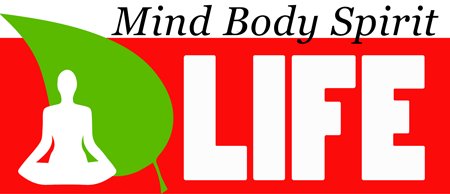15 Ways to Break Free from Addiction

Breaking Bad Habits: Your Journey Starts Here
Let’s face it – breaking free from addiction is about as fun as watching paint dry while doing your taxes. But here’s the thing: according to the National Institute on Drug Abuse, about 40-60% of people successfully recover from addiction. Those are better odds than finding a matching sock pair in your laundry! And with dedication and the right support system, you can join those success stories.
1. Join the “AA Squad” (Or Other 12-Step Programs)
Think of Alcoholics Anonymous and similar groups as the original social networks – minus the cat videos and food pics. Studies show that people who regularly attend 12-step programs have a 40% higher chance of maintaining sobriety. Plus, where else can you get free coffee and brutally honest life advice at 7 AM? These programs provide structured support, accountability, and a community of people who truly understand your journey. The combination of peer support, spiritual growth, and practical coping strategies makes these programs a cornerstone of recovery for millions worldwide.
2. Low-Dose Naltrexone (LDN): The Little Helper
LDN is like that friend who stops you from drunk-texting your ex – it blocks the feel-good effects of addictive substances. Research shows it can reduce cravings by up to 75% when used correctly. Always consult your doctor before starting any medication regimen (they went to medical school for a reason). LDN works by modulating the body’s opioid receptors, helping to normalize brain chemistry and reduce compulsive behaviors. When combined with therapy and lifestyle changes, it can be a powerful tool in your recovery arsenal.
3. Therapy: Not Just for Reality TV Stars
Cognitive Behavioral Therapy (CBT) has shown a 60% success rate in treating addiction. It’s like having a personal trainer for your brain, minus the expensive gym membership and questionable protein shakes. CBT helps you identify destructive thought patterns, develop healthy coping mechanisms, and create lasting behavioral changes. Other effective therapeutic approaches include Dialectical Behavior Therapy (DBT), Motivational Interviewing, and trauma-focused therapies. Many people find that a combination of different therapeutic approaches works best for their unique situation.
4. Exercise: Your Natural High
Studies show that regular exercise can reduce drug cravings by up to 50%. Plus, you get the added bonus of actually having a legitimate reason to wear those expensive workout clothes collecting dust in your closet. Exercise releases natural endorphins, improves sleep quality, reduces stress, and helps rebuild damaged neural pathways. Whether it’s yoga, running, weightlifting, or dancing in your living room, finding a form of movement you enjoy can be transformative in recovery.
5. Mindfulness Meditation: Not Just for Zen Masters
Research shows 8 weeks of mindfulness practice can reduce addiction-related anxiety by 42%. And no, scrolling through your phone doesn’t count as meditation, no matter how focused you are. Mindfulness helps you develop awareness of your thoughts and triggers without automatically reacting to them. It’s like developing a superpower that allows you to pause between stimulus and response. Regular practice can improve emotional regulation, reduce stress, and strengthen your recovery toolkit.
6. Build Your Support Squad
People with strong support systems are 65% more likely to maintain sobriety. Your squad should include friends, family, and professionals – basically anyone who won’t suggest “just one drink” as a solution to your problems. This network might include therapists, support group members, sober friends, understanding family members, and recovery coaches. Think of them as your personal cheerleading squad, crisis hotline, and wisdom council all rolled into one.
7. Find Your Trigger-Free Zone
Identify and avoid triggers with the same dedication you use to avoid your ex at the grocery store. Studies show that avoiding triggers can reduce relapse rates by 70%. This might mean changing your route home to avoid passing certain places, clearing your house of triggering items, or restructuring your social circle. Creating safe spaces where you can relax without constant vigilance is crucial for long-term recovery. Remember, it’s not about running away – it’s about creating an environment that supports your success.
8. Get Quality Sleep
Poor sleep increases relapse risk by 85%. Think of good sleep as your body’s way of hitting the reset button – minus the frustration of having to restart your computer. Establish a consistent sleep schedule, create a relaxing bedtime routine, and make your bedroom a sanctuary for rest. Quality sleep improves decision-making, reduces cravings, and helps regulate emotions. It’s like giving your brain a nightly spa treatment.
9. Healthy Eating: Fuel Your Recovery
A balanced diet can reduce cravings by 40%. Yes, this means trading in your 3 AM taco runs for actual meals. Your body will thank you later. Recovery requires rebuilding, and proper nutrition provides the building blocks. Focus on whole foods, regular meals, and staying hydrated. Consider working with a nutritionist who specializes in addiction recovery to develop a personalized plan that supports your healing journey.
10. Pick Up a New Hobby
People with engaging hobbies are 45% less likely to relapse. Maybe it’s time to finally learn that instrument or try painting – anything that doesn’t involve substance use or watching entire seasons in one sitting. Hobbies provide healthy dopamine hits, social connections, and a sense of accomplishment. They fill the time previously spent using substances and help you rediscover who you are without addiction. Plus, you might actually develop a skill that impresses people at parties (in a good way).
11. Al-Anon: Family Support Matters
Because addiction is a family disease (and not the fun kind of family gathering). Al-Anon helps families understand addiction with a 55% improvement in family dynamics. Think of it as family therapy, but with better snacks. Family members learn healthy boundaries, communication skills, and how to support recovery without enabling. When families heal together, the chances of successful long-term recovery significantly increase.
12. Track Your Progress
People who monitor their recovery are 37% more likely to stay sober. Use an app or journal – whatever helps you see how far you’ve come from “rock bottom” (which wasn’t actually that rocky, was it?). Track your moods, triggers, victories, and challenges. This data becomes invaluable for identifying patterns, celebrating progress, and adjusting your recovery strategy. Plus, looking back at your journey can provide motivation during tough times.
13. Practice Self-Compassion
Studies show self-compassion increases recovery success by 45%. Remember: you wouldn’t judge your best friend this harshly, so why do it to yourself? Self-compassion isn’t about making excuses; it’s about treating yourself with the same kindness and understanding you’d offer others. This includes acknowledging setbacks without letting them define you, celebrating small wins, and recognizing that recovery is a journey, not a destination.
14. Create a Daily Routine
Structure reduces relapse rates by 60%. Think of it as giving your day a backbone – something to hold everything together when things get wobbly. A solid routine includes regular meals, exercise, self-care, work/school commitments, and recovery activities. Build in flexibility for unexpected events, but maintain core habits that anchor your day. This structure provides stability and reduces decision fatigue, making it easier to stay on track.
15. Help Others
Becoming a mentor or volunteer increases your own chances of staying sober by 50%. Plus, it’s the only time being a know-it-all is actually appreciated. Helping others provides perspective, reinforces your own recovery lessons, and creates meaningful connections. Whether it’s formally sponsoring someone, volunteering at a treatment center, or simply sharing your experience at meetings, giving back is a powerful recovery tool.

The Bottom Line
Recovery isn’t a sprint – it’s more like a marathon where you occasionally trip, get back up, and keep going. The good news? Every step forward is progress, even if you’re wearing mismatched socks while taking it. Remember: According to recent studies, people who combine multiple recovery methods (like medication, therapy, and support groups) have up to an 80% higher chance of long-term success. That’s better odds than finding a parking spot at the mall during holiday season!
Always consult healthcare professionals before starting any treatment program. They’re like GPS for your recovery – much more reliable than that friend who swears they know a shortcut.



